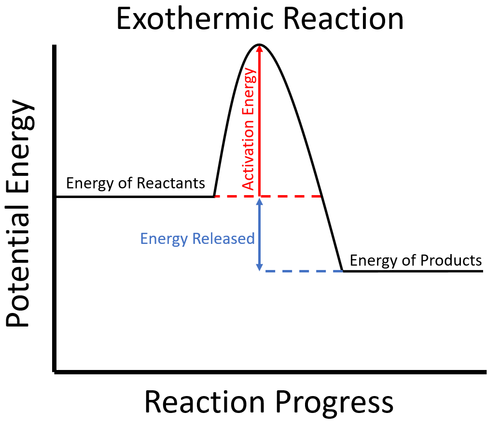- Write the equation for cellular respiration. (underline the products)
- What type of reaction is it?
C6H12O6 + 6O2 --> 6H2O + 6CO2
Exothermic
The activation energy is reduced in the presence of a __________.
catalyst
What is ATP and where in our body is it made?
Molecule that stores energy that our body can use; mitochondria.
Organisms that use energy from the sun to make their own food. (Two?)
Autotrophs or Producers
What direction does energy flow in a food pyramid?
only UP!
If the activation energy of a reaction is lowered then the reaction will happen ____________.
A molecule that binds with an enzyme is called a _________.
substrate
How is energy released from an ATP molecule?
The bond between the last to phosphate molecules is broken.
Any organism that is not a producer is called a __________.
Heterotroph
What would be the direct effect of a decrease in the number of grasshoppers?

The frog population would decrease. The rat population would disappear because grasshoppers are their only source of energy.
Which type of reaction absorbs more energy then it releases?
Endothermic reaction
Draw a enzyme substrate complex in 3-4 steps (the result should be 2 products)

Which molecule is recycled in the ATP-ADP cycle?
ADP
An organism that consumes both grass and grasshoppers is classified as a ___________.
Omnivore
Describe the Rule of 10.
Only 10% of the energy is available to the next trophic level. The other 90% is either used or lost as heat.
Draw an exothermic energy diagram.
- Label the product (P), the Reactants (R), and the activation energy.

Oops, wrong column...What is the process called that converts food energy into into ATP? (Think of how we get the energy to add the P onto the ADP)
Cellular respiration
Label the following diagram.

A: Adenine
B: Ribose
C/D: Phosphates
Producers.
A. Draw a food pyramid using Algae --> Fish --> Otter.
B. Label each trophic level.
C. Circle the animal with the least amount of energy avalaible.
A. Algea at the bottom, Otter at the top.
B. Producer (bottom), Primary Consumer (middle), Secondary Consumer (top)
C. Otter